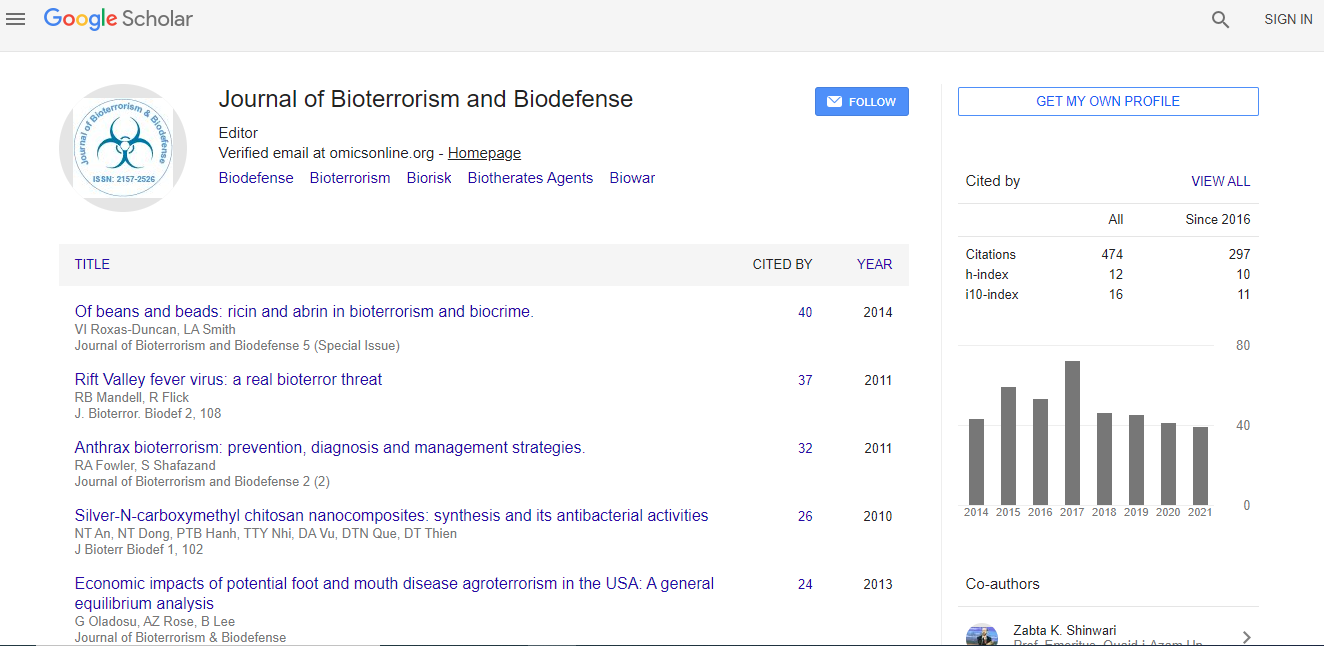Research Article
Operational Evaluation of the Rapid Viability PCR Method for Post-Decontamination Clearance Sampling
Staci Kane1, Sanjiv Shah2*,#, Sonia Létant1, Gloria Murphy1, Teneile Alfaro1, Julie Avila1, Edmund Salazar1, Marissa Mullins3 and Tonya Nichols2
1Lawrence Livermore National Laboratory, Livermore, CA, USA
2US Environmental Protection Agency, National Homeland Security Research Center, USA
3US Environmental Protection Agency, Office of Emergency Management USA
- *Corresponding Author:
- Sanjiv Shah
US Environmental Protection Agency
National Homeland Security Research Center
EPA-NHSRC, 1200 Pennsylvania Ave.
NW 8801 RR, Washington, DC 20460, USA
Tel: 202-564-9522
Fax: 202-564-1614
E-mail: shah.sanjiv@epa.gov
Received Date: April 16, 2013; Accepted Date: June 03, 2013; Published Date: June 06, 2013
Citation: Kane S, Shah S, Létant S, Murphy G, Alfaro T, et al. (2013) Operational Evaluation of the Rapid Viability PCR Method for Post-Decontamination Clearance Sampling. J Bioterr Biodef S3:016. doi:10.4172/2157-2526.S3-016
Copyright: © 2013 Kane S, et al. This is an open-access article distributed under the terms of the Creative Commons Attribution License, which permits unrestricted use, distribution, and reproduction in any medium, provided the original author and source are credited.
Abstract
The Rapid Viability Polymerase Chain Reaction (RV-PCR) method was evaluated during the Bio-Response Operational Testing and Evaluation (BOTE), an interagency project to evaluate field-level facility biological remediation, using leading decontamination technologies. The tests were performed using an intentional release (aerosolization) of spores of Bacillus atrophaeus subspecies globigii (BG), as a surrogate for Bacillus anthracis, the etiologic agent for anthrax. Three decontamination methods were assessed including fumigation with vaporized hydrogen peroxide (VHP), fumigation with chlorine dioxide (CD), and a surface treatment process using pH-adjusted bleach.The RV-PCR method was developed to rapidly detect live B. anthracis spores during a bioterrorism event. The method uses a change in realtime PCR response before and after a nine hour incubation step, to determine the presence of viable bacterial spores in the sample; the method was recently verified for air filter, wipe and water samples at the 10-spore level for B. anthracis Ames spores, and was also developed for swab, sponge-stick, and vacuum sock/filter samples. In the method, high throughput sample processing is combined with PCR-based analysis before and after a rapid culture step to speed viability determination, especially for complex surface and environmental samples that present challenges to current culture-based methods. In the BOTE project, a total of 159 surface wipe samples from post-decontamination events were analyzed by splitting the suspension after spore recovery into two equal parts, with one part analyzed by RV-PCR and the other part by culture after concentrating to the same volume. In the BOTE project, the RV-PCR method provided rapid results for post-decontamination samples that were 98% (156/159 samples) consistent with results from culture analysis. The percentage agreement was noteworthy, given the large number of samples containing low spore levels. For the Post-VHP, Post-Bleach, and Post-CD event samples, the percentage agreement was 93% (41/44 samples), 100% (47/47 samples), and 100% (68/68 samples), respectively. The RV-PCR method performed well for the surrogate BG spores exposed to decontaminants at real-world application levels, and with wipe samples containing background debris and indigenous microbial populations.

 Spanish
Spanish  Chinese
Chinese  Russian
Russian  German
German  French
French  Japanese
Japanese  Portuguese
Portuguese  Hindi
Hindi 